Documentation
1. About MAMI database
1.1 Aims and features of MAMI
Human microbiomes and probiotics have been proven to impact human health significantly in many studies, with a number of microbial raw sequences from multiple body sites produced and probiotics strains discovered. Especially for the population of infants while microorganisms on their body are simpler than adults and will develop rapidly. Moreover, the maternal microbiota plays the most essential role in infant microbiota colonization and development.

Exploring how the microbiota of infants changes in their early life is key to discovering the association between microbiome and infant health. So here we curated and reprocessed many data related to maternal and neonatal health, and then constructed this database with many useful functions, such as Search, Browse, Analysis and Probiotics.

1.2 Database statistics
We retrieved metagenomic and 16S rRNA sequencing datasets of longitudinal samples of infants and mothers from multiple public cohorts. In total, more than 36,000 microbiome datasets of thousands of infants aged 1-36 months and mothers were obtained and analyzed after quality control. This combined dataset covered 29 countries on 6 continents, including Asia, South and North America, Europe, Australia, and Africa. Several clinical features of mother and infant populations are shown on the homepage.
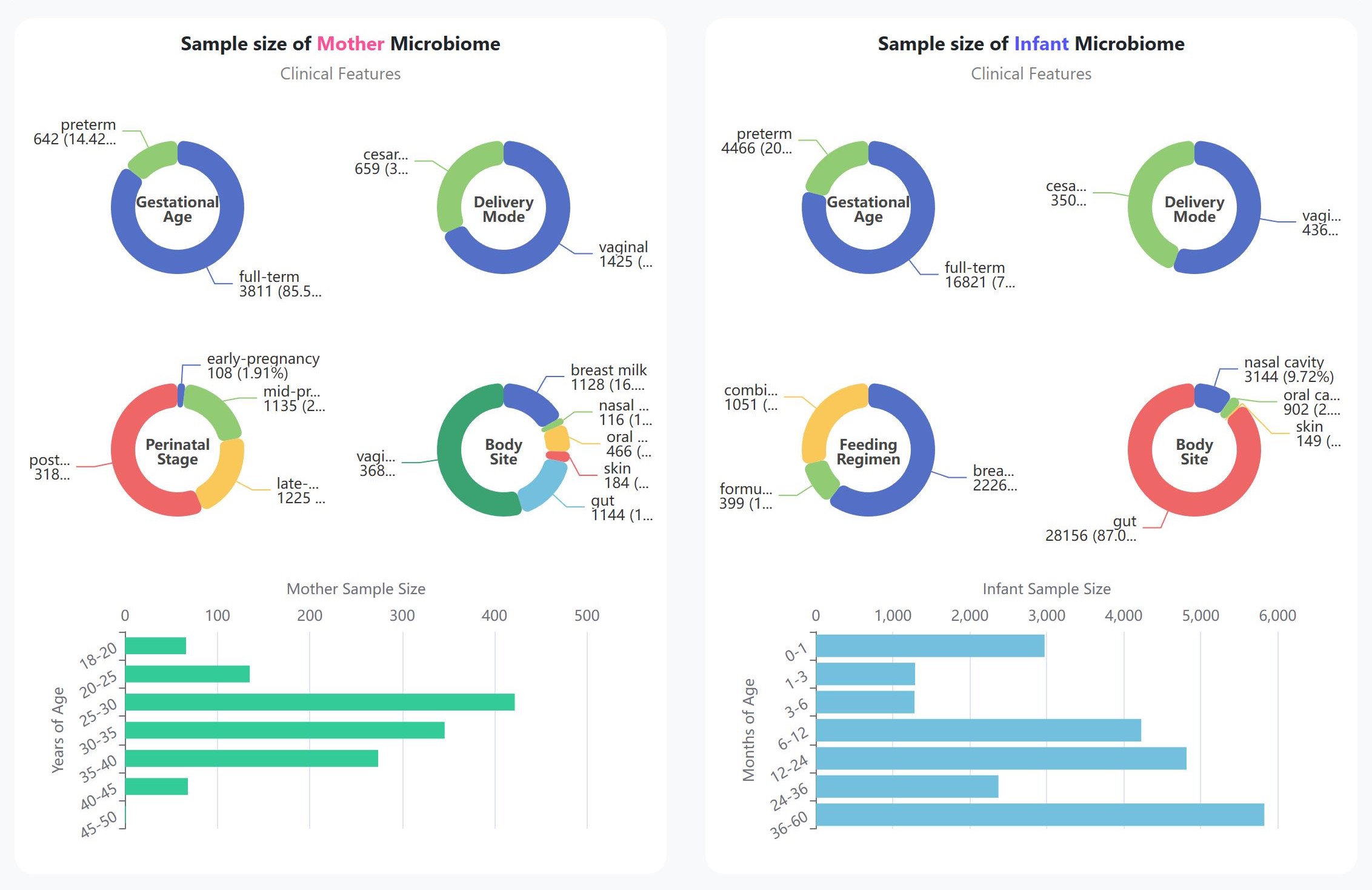
For probiotics, many eatable strains for infants, probiotics foods, probiotics drugs and probiotics patents are curated in MAMI.

2. Search Microbes using MAMI
2.1 Search box
Input the microbial name in the search box and click the "Search" button at the top of the "Search" page, then you can get search results of genus or species present in mother-infant microbial samples, as well as probiotics strains curated in the database.

2.2 Search result
The matched results will be shown at 3 levels (genus, species and strain), then you can click any resulting card of them to get the details.
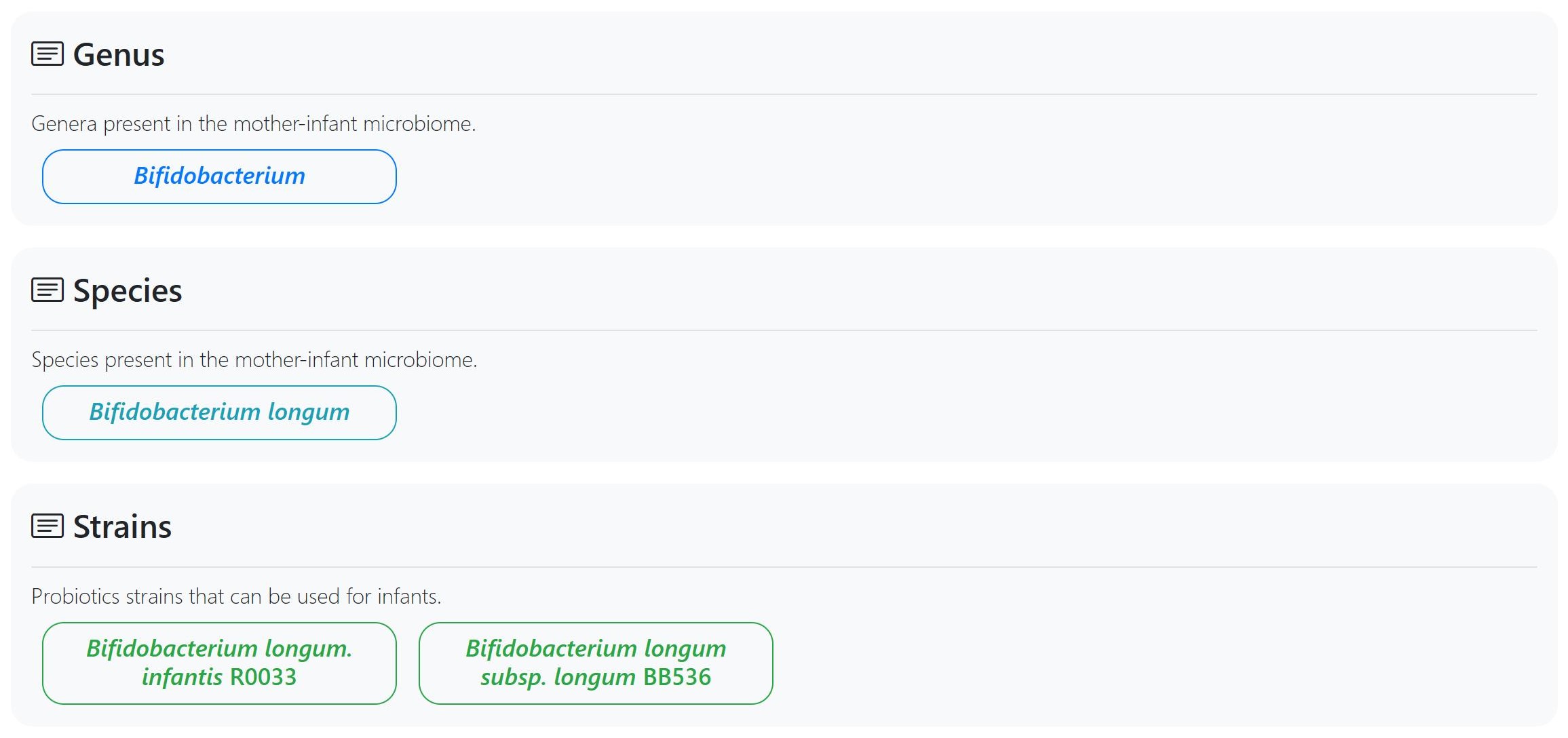
2.3 Microbial details
When you at the detail page, you will see comprehensive characteristics of the target microbe in maternal or neonatal microbiome, such as microbial prevalence across different countries, relative abundance across multiple body sites or clinical features and so on. Besides, we include an external database gutMDisorder for users to refer to microbial abundance alternation associated with human phenotypes.
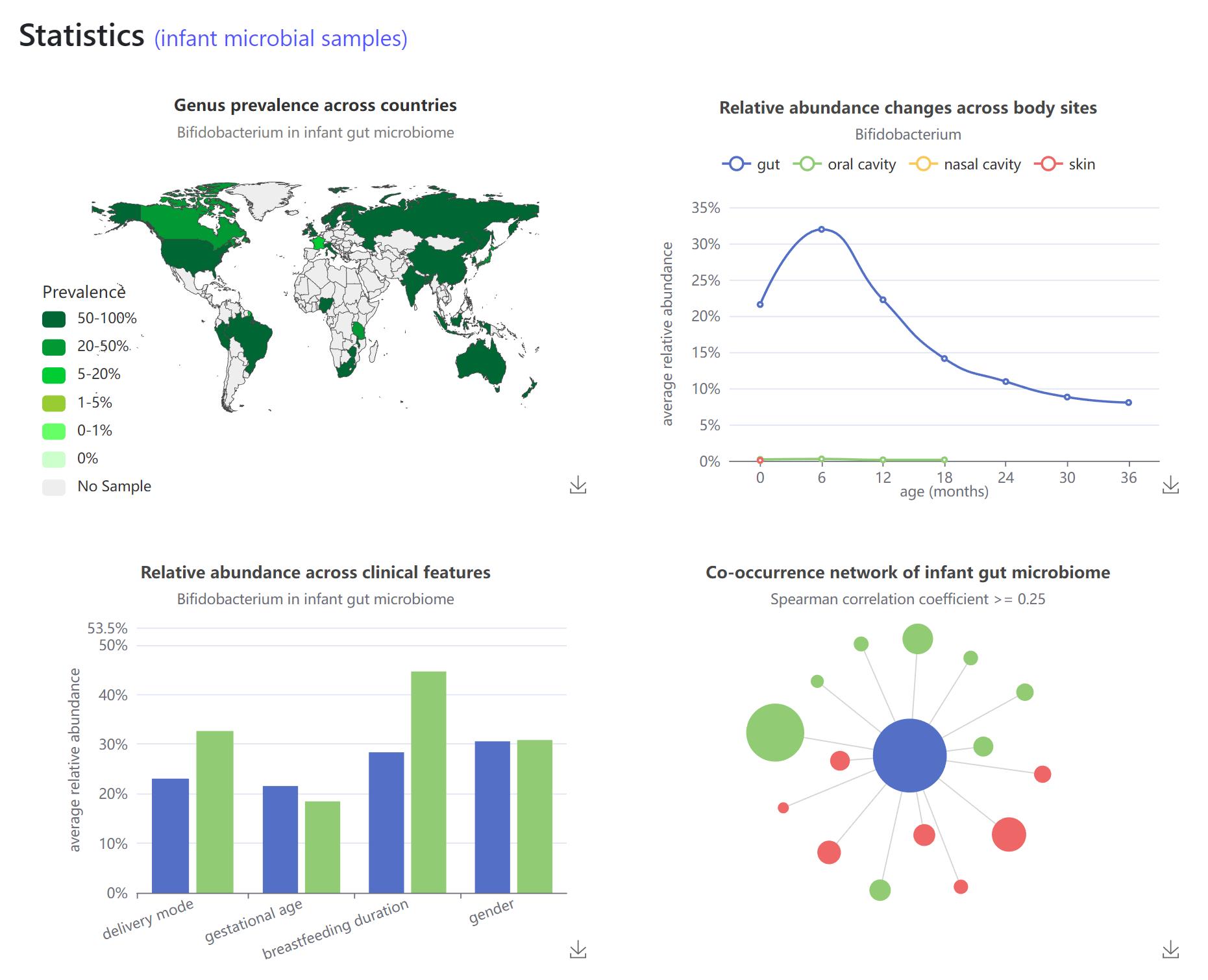
3. Browse Microbiome using MAMI
3.1 Browse infant gut microbiome from database
As most microbiome data currently in our database are from infant stool samples and sequenced by the amplicon technology, all the interactive diagrams are plotted based on infant gut microbiome and at genus level now. You can select a population you are interested in by setting the filters, and then click the "Browse" button to visualize the microbiome of them.

Especially, MAMI provides 5 parts of diagrams. Click the tap to get different types of plots for your investigation. And all plots are downloadable as SVG images.
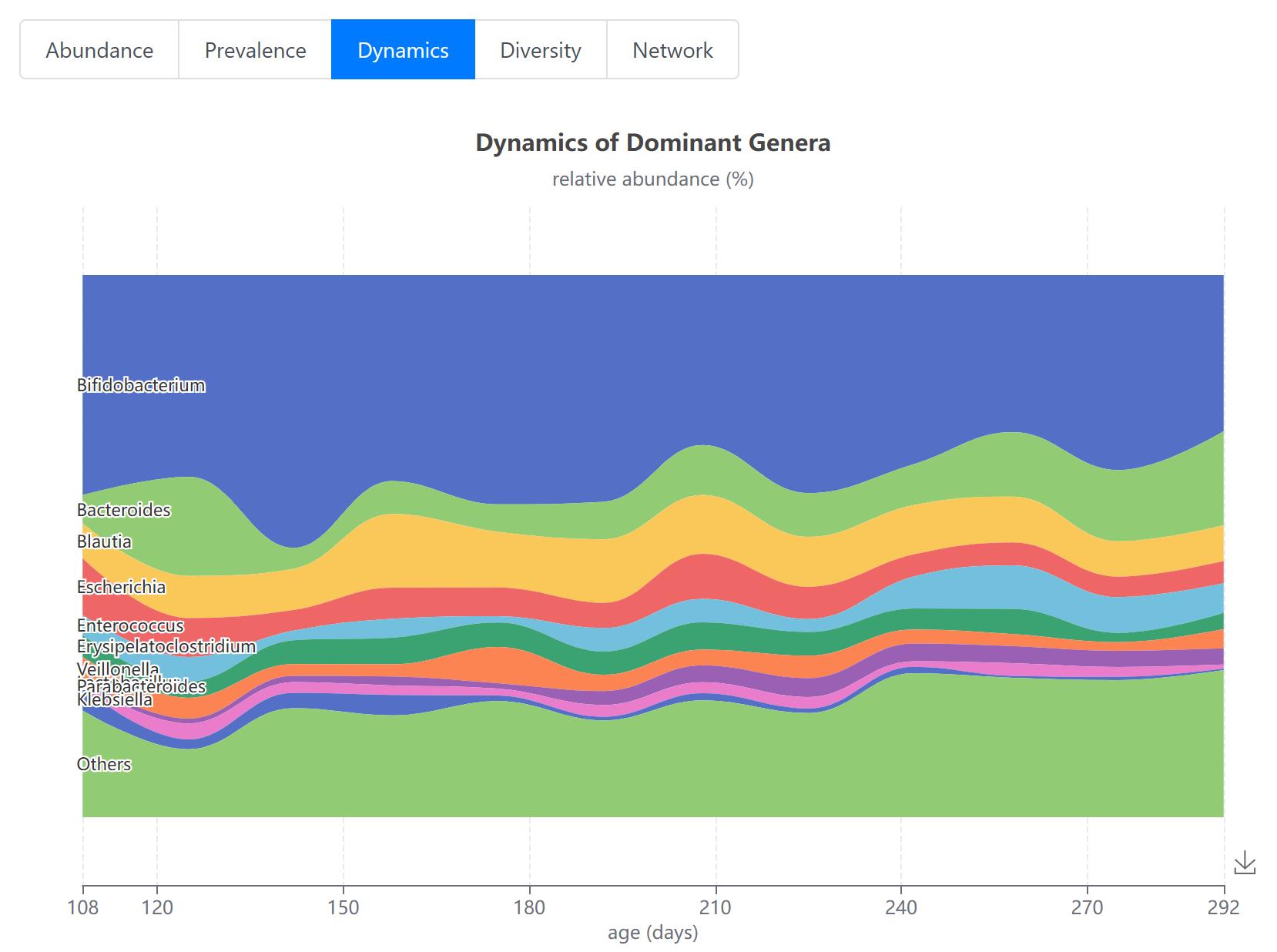
3.2 Browse microbiome on your local file
Moreover, you can click the "Uploaded data" button at the sidebar to visualize your taxonomic abundance table. In this module, you are expected to upload a valid file for visualization. Example data can be referred to if you have problems.
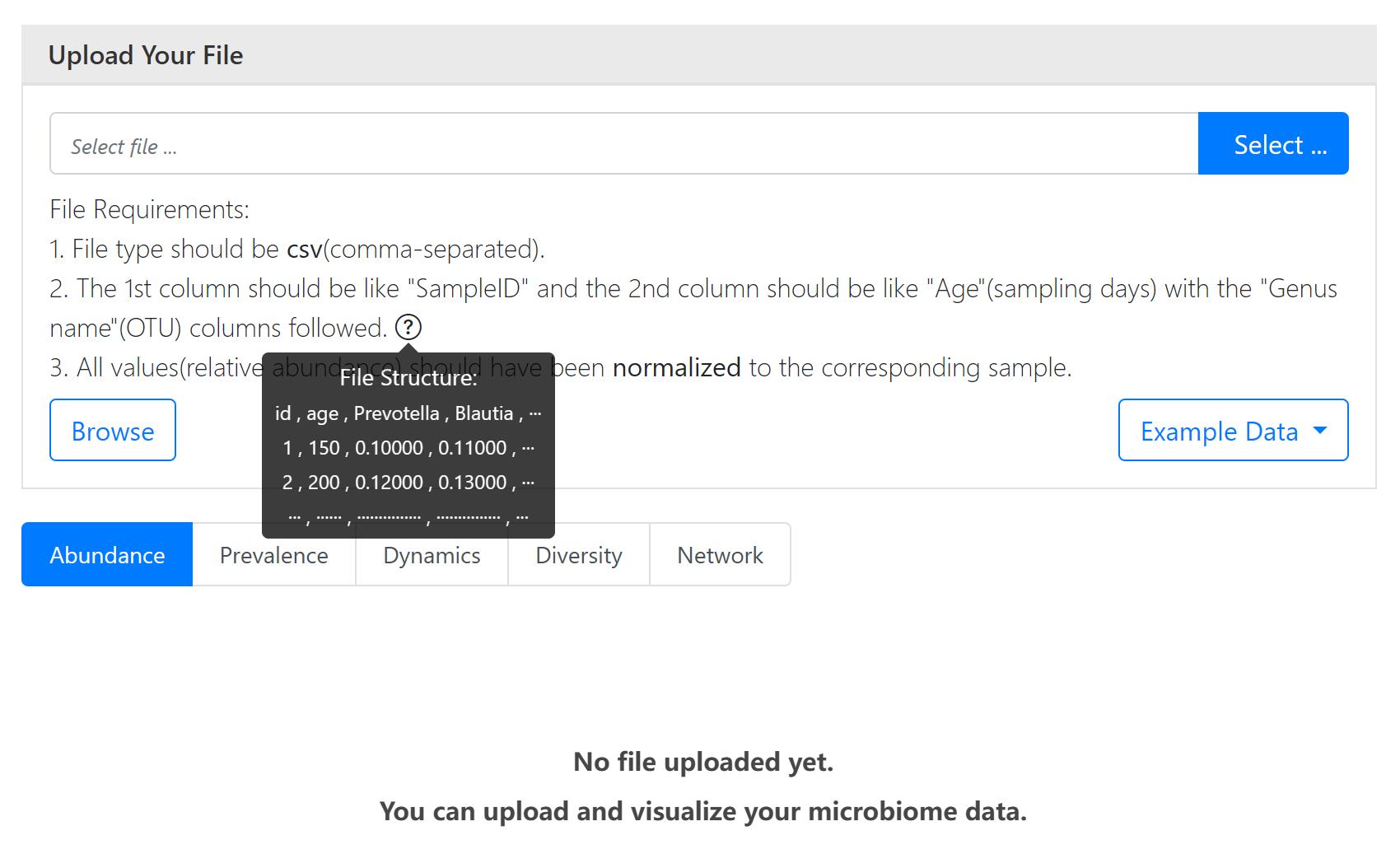
4. Analyse Microbiome using MAMI
4.1 Make a comparison between 2 groups of database data
On this page, you can make a comparative analysis between 2 groups of microbiome data. Firstly, set the filters to select the 2 groups of data from the database you want to compare with, then click the "Compare" button to plot the figures.
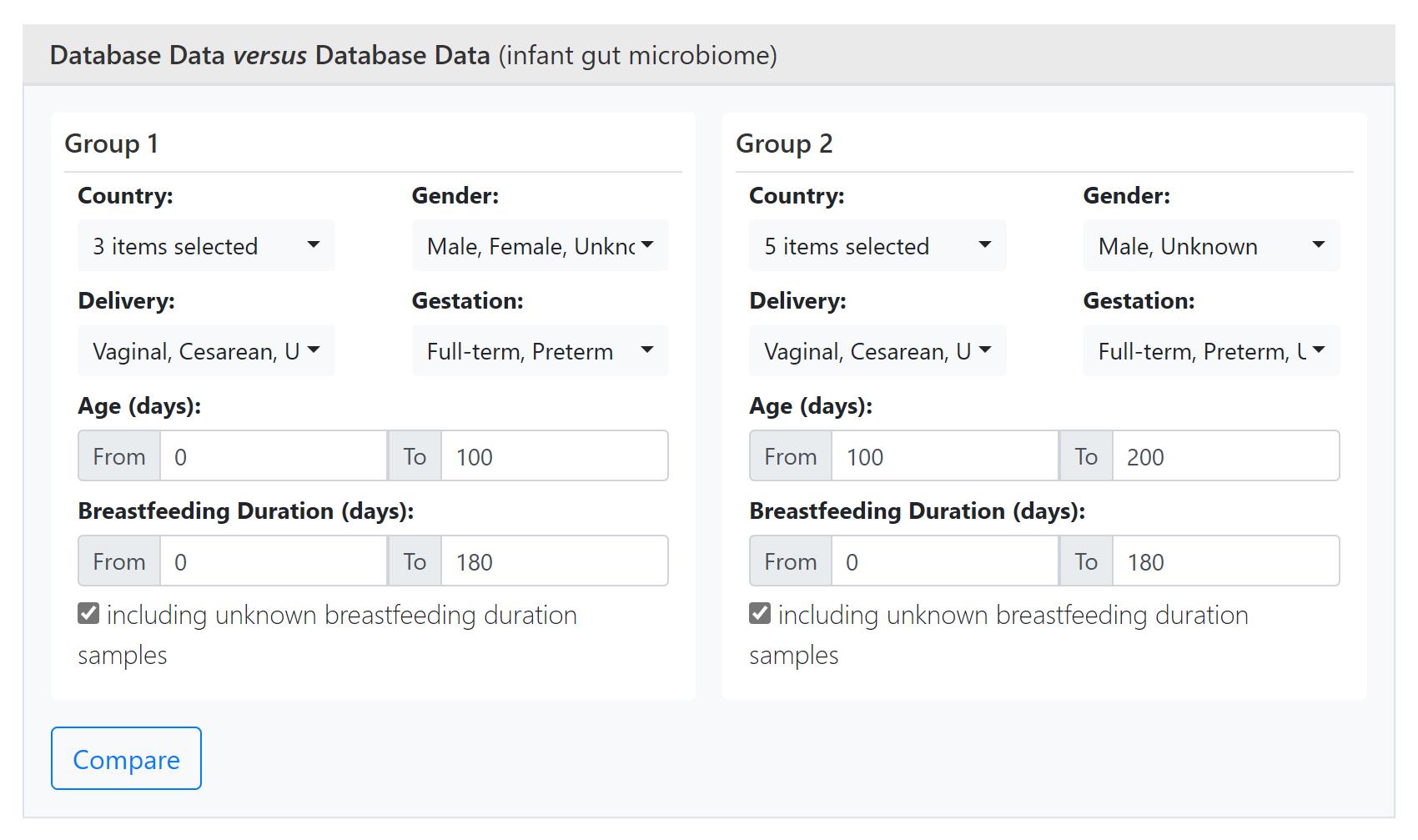
As results of microbiome comparisons, abundance, prevalence, diversity and network figures are shown for users.
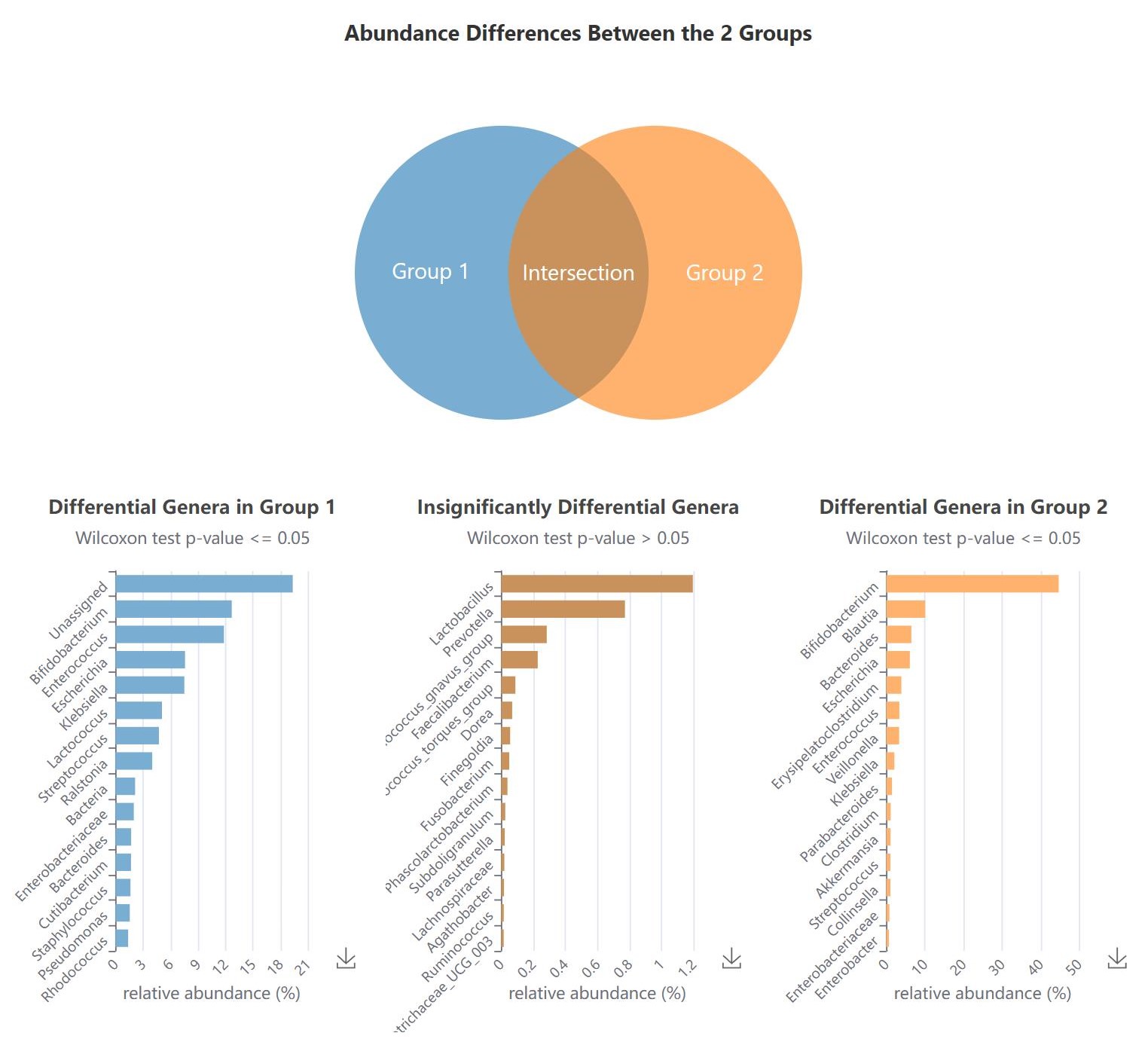
4.2 Make a comparison between database and uploaded data
Same to the upload function in the "Browse" page, you can also upload your local file and make a comparative analysis. Set the filters for Group 1 and upload your taxonomic abundance table for Group 2, and then click the "Compare" button to start plotting.
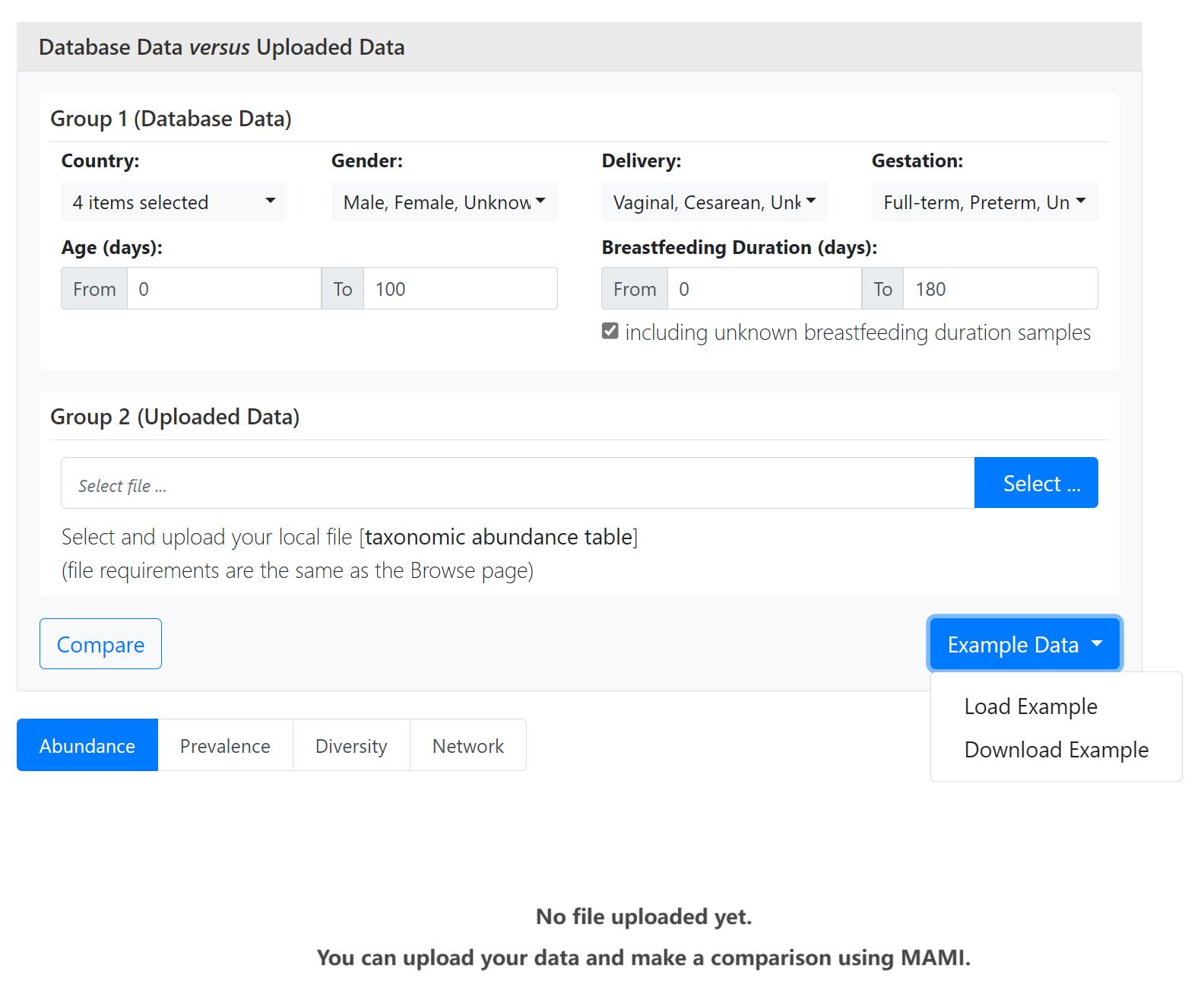
5. Investigate Probiotics in MAMI
Here we curated 14 probiotics strains that can be used for infants, with 4 parts of probiotics information showing in the sidebar.5.1 Probiotics list
In this part, all the probiotics are present in the table. You can click any of them for further browsing. It should be noted that a few items are not clickable because they are not collected in the database now.
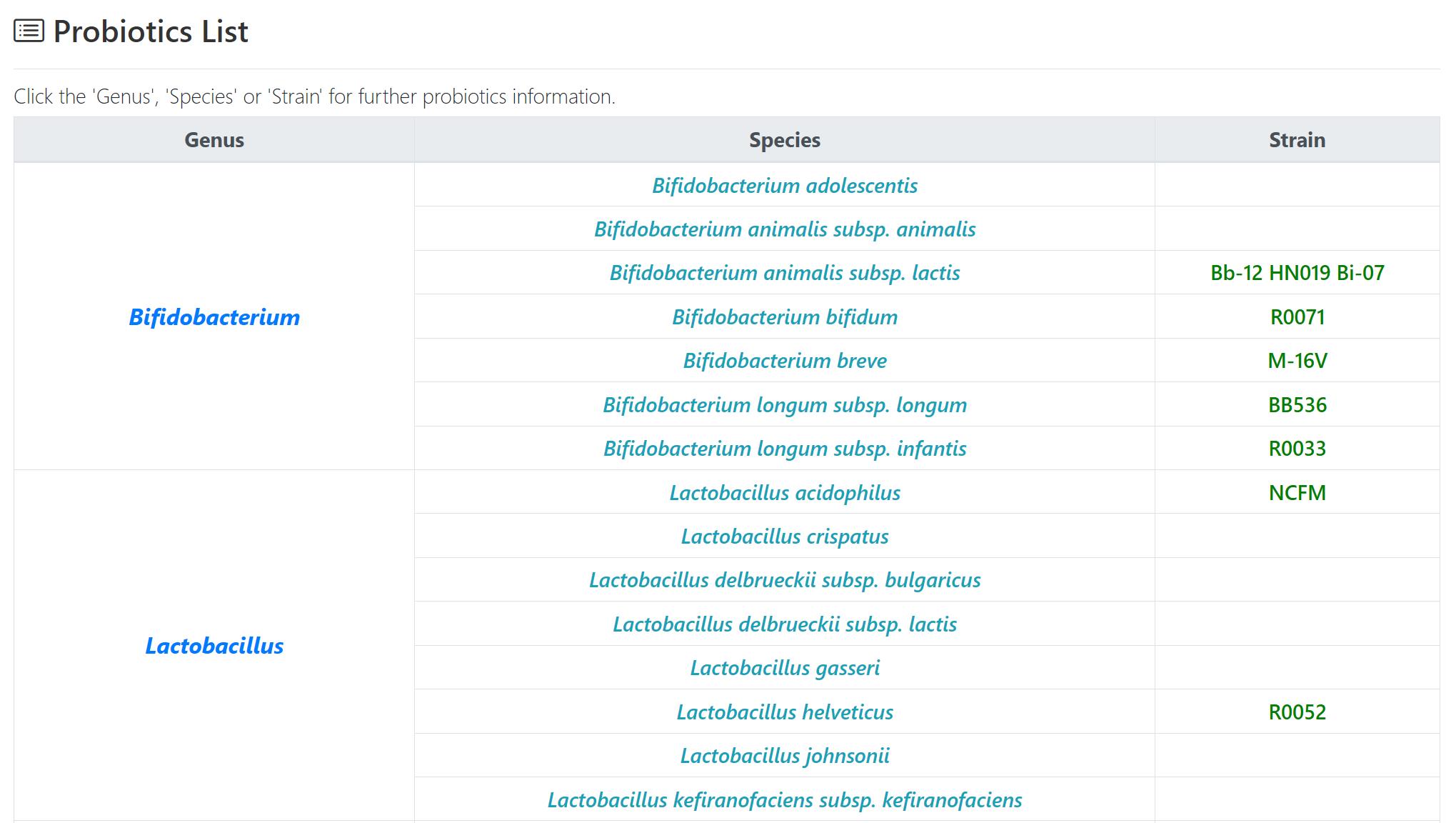
As for details of probiotics strains, we provide introductions, functional studies, external links and so on for users' referring.
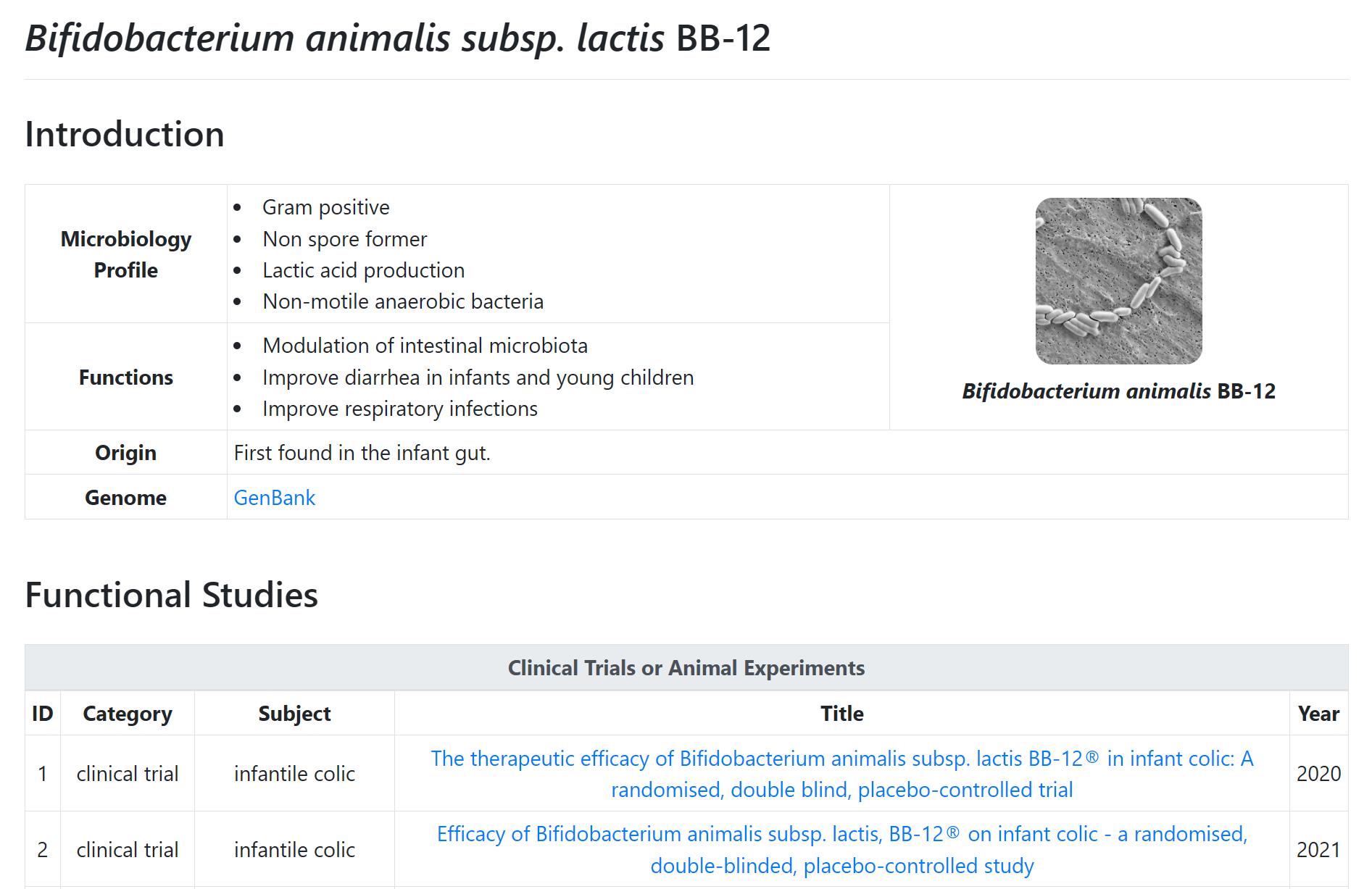
5.2 Probiotics foods
Probiotics are wildly used in foods currently and are proven to help promote human health. There are many probiotics foods for infants collected in MAMI.
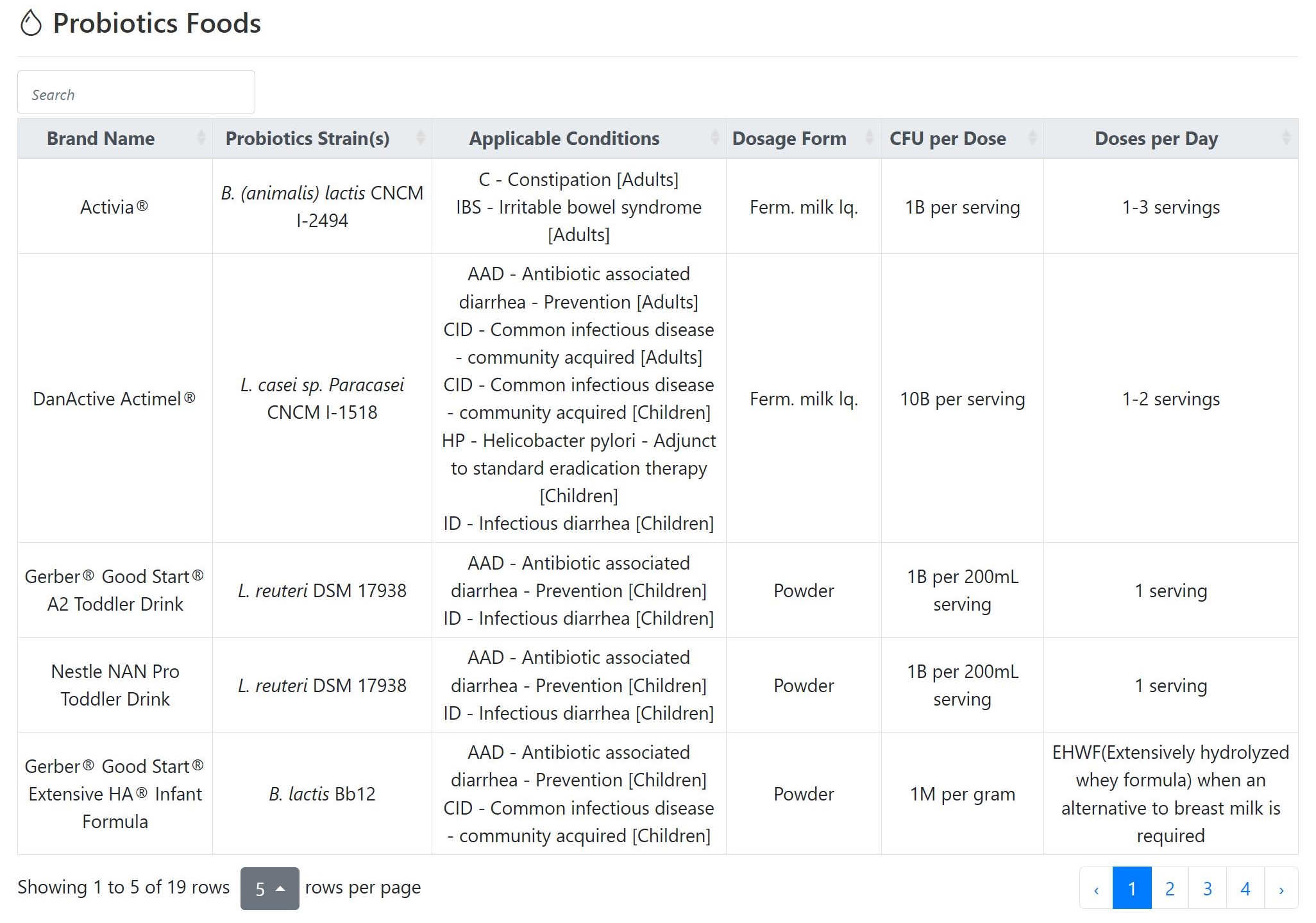
5.3 Probiotics drugs
Here we curated some probiotics drugs for treating infant diseases, such as AAD(antibiotic-associated diarrhea), IBS(Irritable bowel syndrome) and some other common diseases of infants.
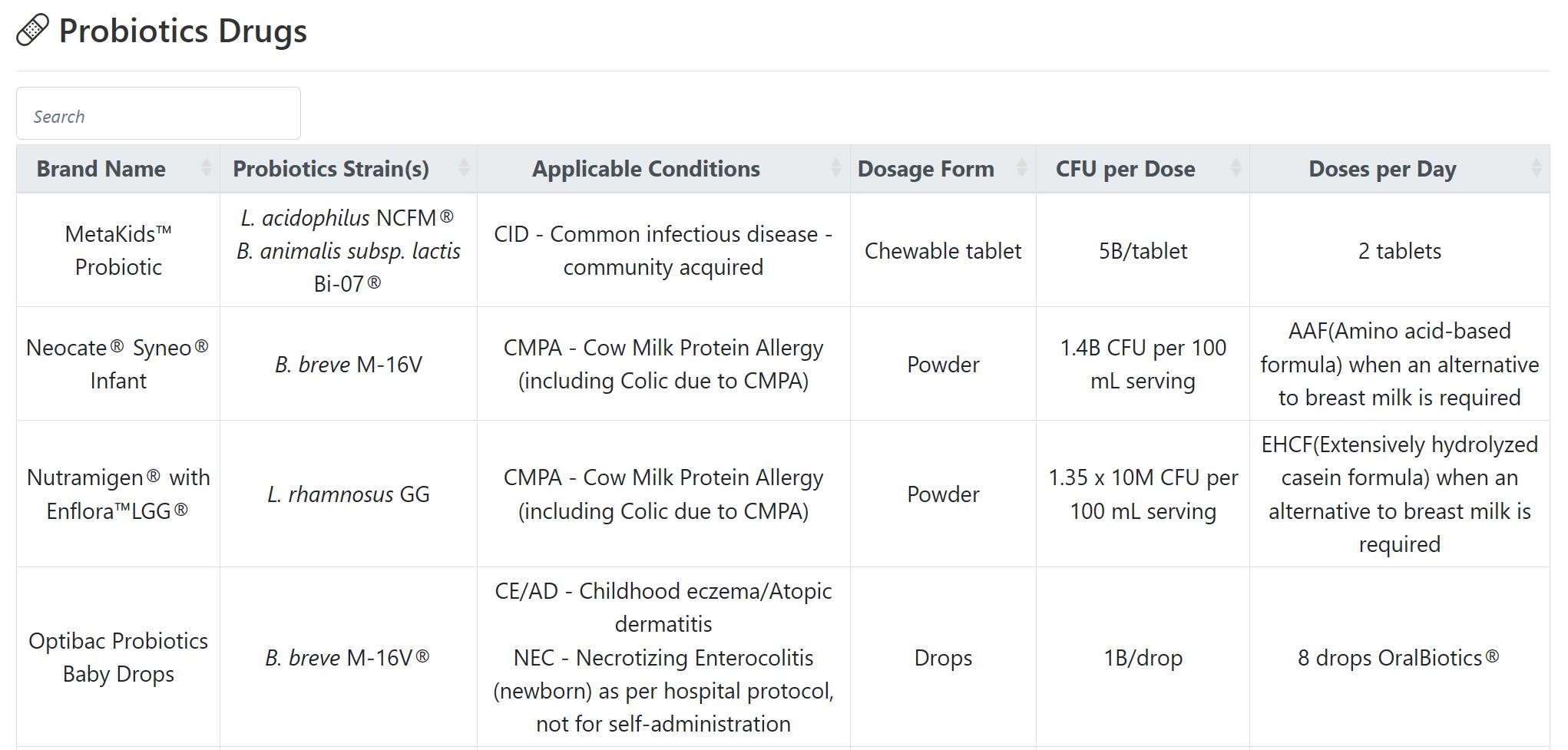
5.4 Probiotics patents
Here we also curated many patents of functional probiotics strains across 4 main regions, including Europe, China, the US and Japan.
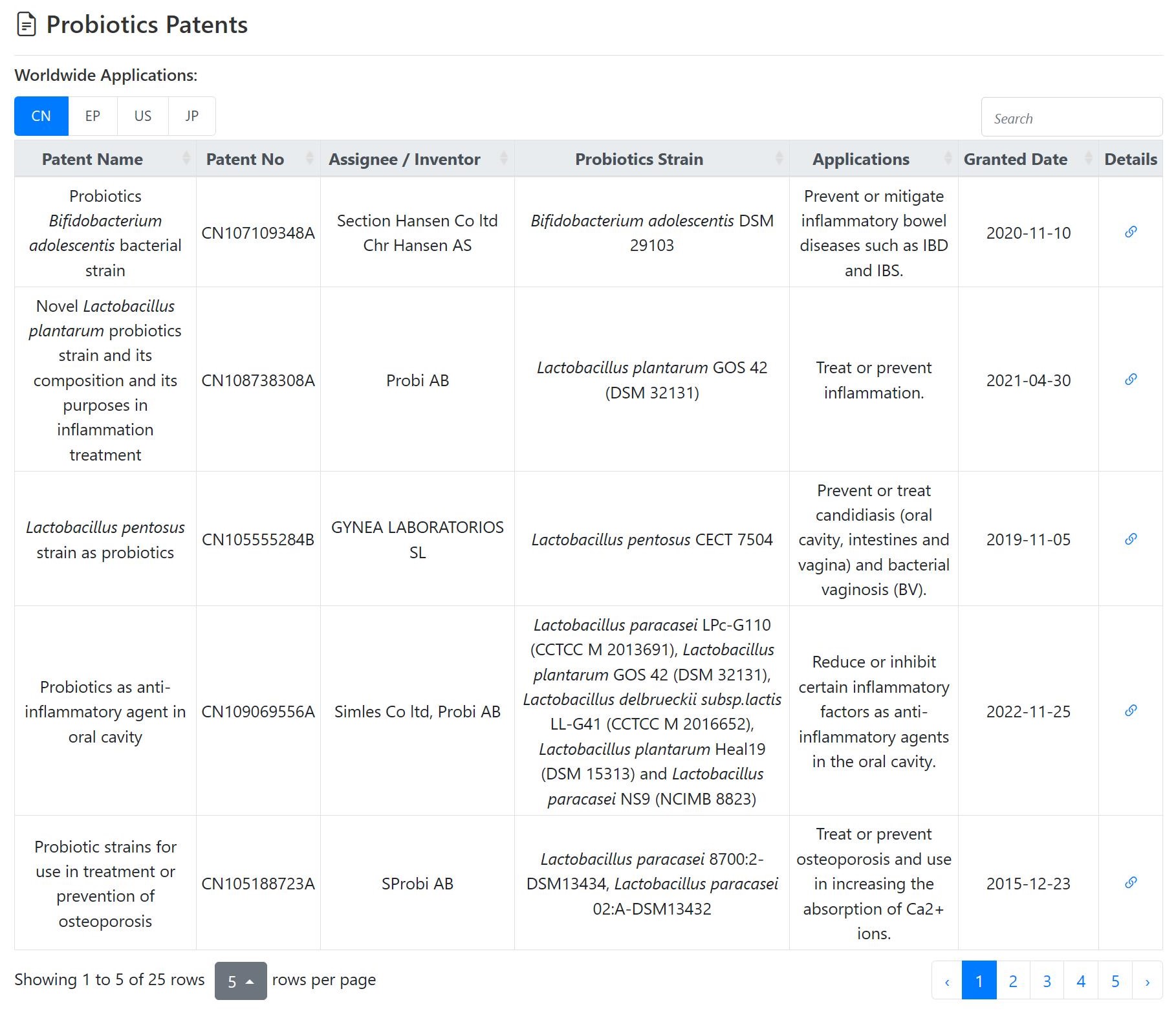
Feedback
Thank you for visiting MAMI !
Please contact us if you have problems or suggestions. Any comments that might help us improve our database are most welcome. We will respond to your feedback as quickly as possible.
Reasonable recommendations will be adopted and implemented in subsequent versions of MAMI. Thanks for your attention and support!
Contacts :
Tian Zhou: zhoutian21@mails.ucas.ac.cn
Dr. Liwen Xiao: xiaoliwen@biols.ac.cn
Prof. Fangqing Zhao: zhfq@biols.ac.cn
Lab:
Zhao's Lab https://bioinfo.biols.ac.cn Beijing Institutes of Life Science, Chinese Academy of Sciences, Beijing, China.